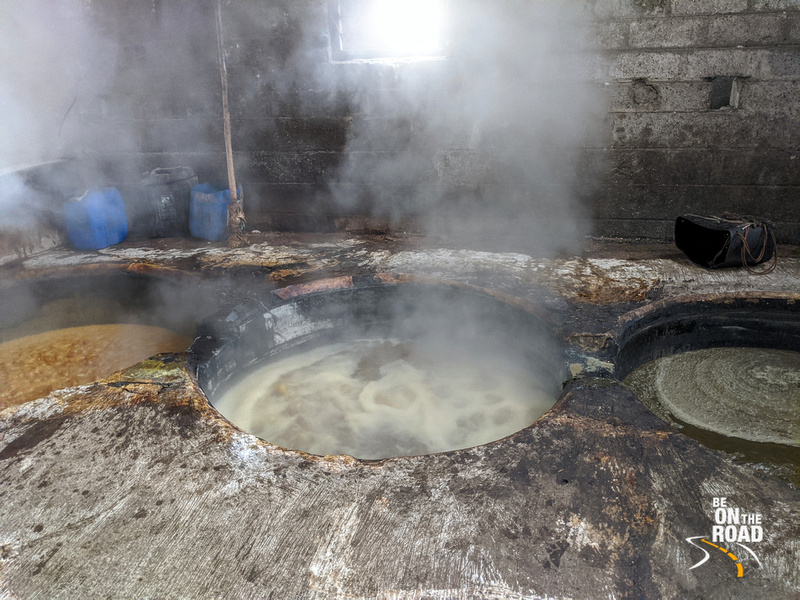The Sweet Journey: From inside a sugarcane factory near Mandya

It is that time of the year when everybody has those sweet cravings. Have you ever wondered how that key ingredient (sugar or jaggery) of your favorite dessert is made and what is the journey it takes before it ends up on your plate/cup? Well, read on if you wish to know about it.
Mandya, located on the fertile plains of the Cauvery river in South-Interior Karnataka is known as the sugar city of Karnataka. It’s countryside is surrounded by sugarcane fields and the sweet smell of molasses wafts in the air. The tropical weather, the fertile plains and the abundant water in its various irrigation canals ensures that they have multiple harvests every year. As a thumb rule, farmers setup traditional sugarcane factories to process the harvest. If the farmer doesn’t have such sugarcane factories, they send their produce to the larger sugar factory, which can also be seen around sugar growing hotspots. This article and the photographs here show the inside workings of one such traditional sugarcane factory.
This sugarcane factory was a flat open area surrounded by sugarcane fields. It consisted of a brick structure, with two floors. On the top floor is a diesel powered engine, a sugarcane crusher, a chimney setup and the sugarcane. And on the ground floor is the filtration, boiling and sieving system. Sugarcane workers from Uttar Pradesh are usually the ones to be seen in such factories. Either, they come cheap or they are extremely skilled.
Tractor loads of sugarcane arrive at these factories upon harvest. This sugar cane is then sent up to the first floor via the lift (operated by the diesel engine or electricity). On the first floor, this sugarcane then goes into the sugarcane crusher to remove all its juice. The juice flows via a pipeline to the ground floor while the mulch is thrown out into a separate enclosure. I am not sure if they convert this mulch into fertilizer or if they give it to sugar factories to make ethanol.
In the ground floor, there are 3 inter connected pits. The sugarcane flows into the first pit where it is cleaned, striired and filtered. In the second one, it is allowed to boil and it is continuously stirred. In the third one, it is further cleaned and allowed to cool. Lying perpendicular to the third pit is a slope followed by a wide enclosure where the molten jaggery is poured and allowed to air dry. At this enclosure, either the jaggery is cut into different sizes when it is cold or it is stored into different containers when it is in molten condition. The dry jaggery is now ready for consumption and distribution.
In a full blown sugar factory, the whole thing is automated. And in addition to making jaggery, they crystallize it to make sugar and then they make ethanol and other chemicals from the molasses as by products. They also do produce some electricity too.
One can easily walk into such traditional sugarcane factories, talk to the workers, take permission from them and watch them go about their entire work. If you happen to get lucky like how we got, you can also learn about the entire process while sipping on some fresh sugarcane juice. The next time, you smell molasses in the air while crossing sugarcane fields, do keep an eye out for such traditional sugarcane factories. May be, you too will get to experience it first-hand and up close.

















































































